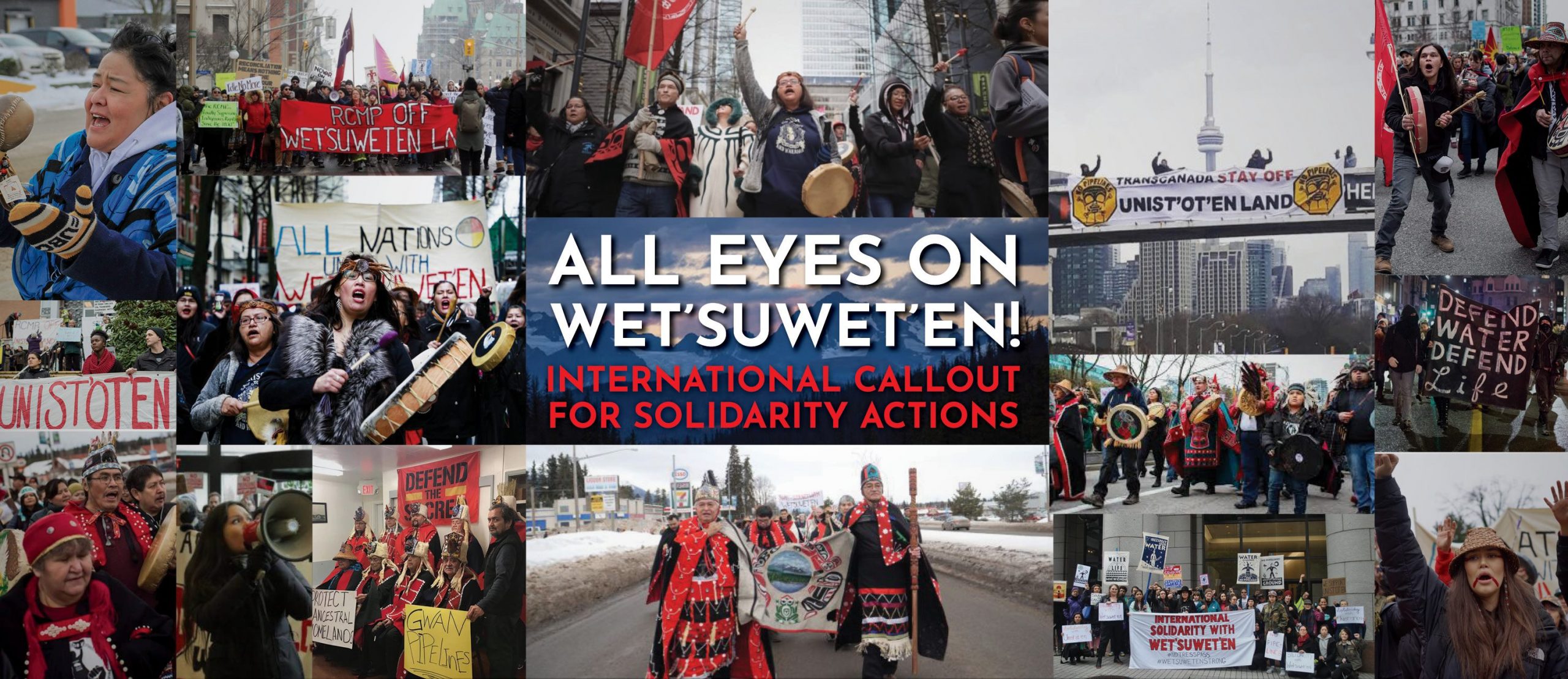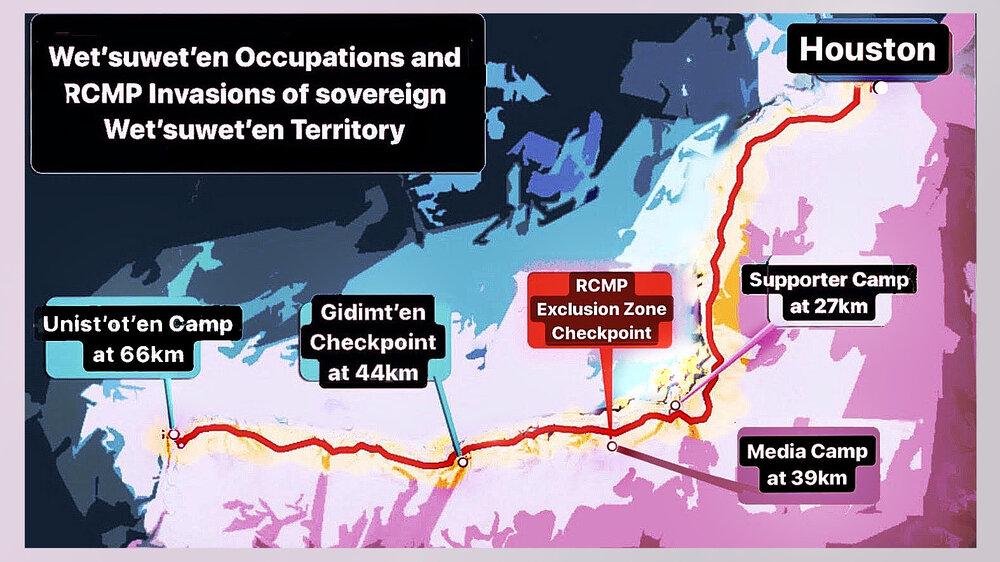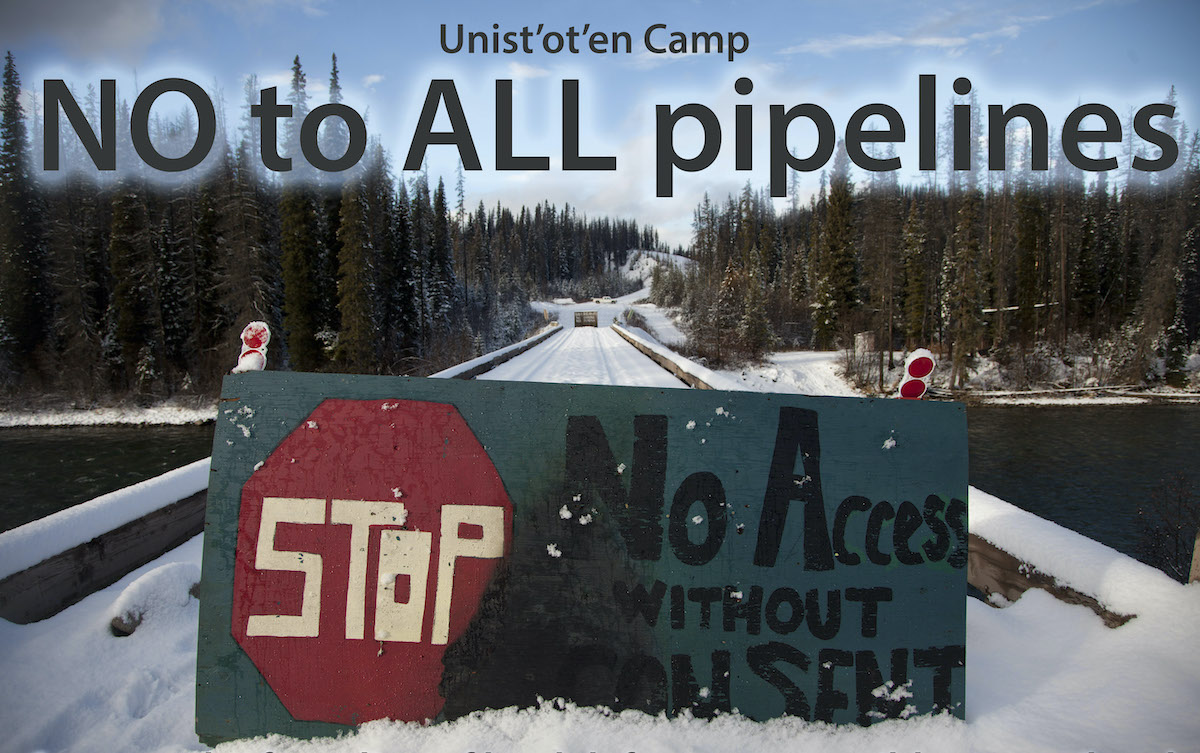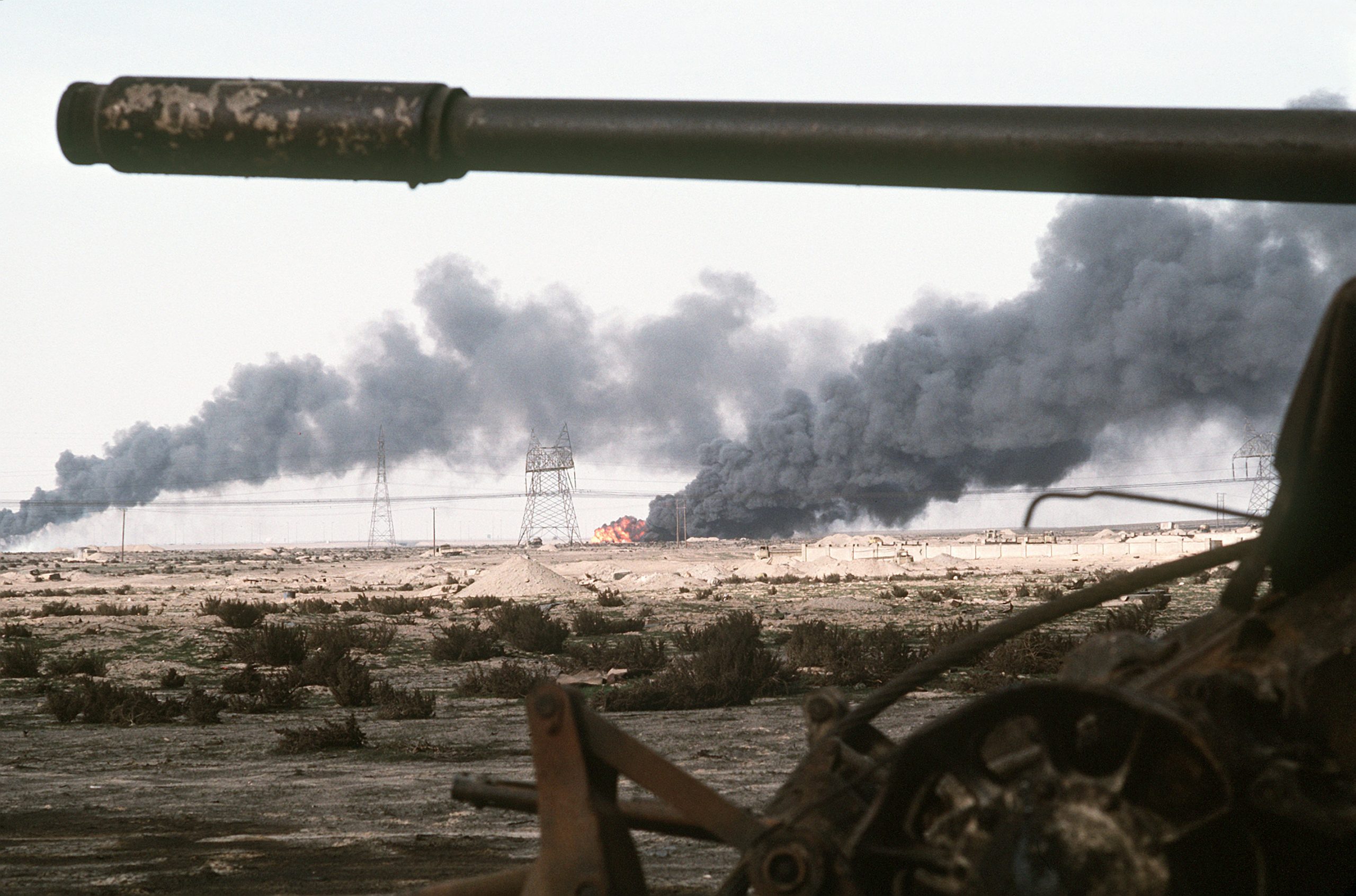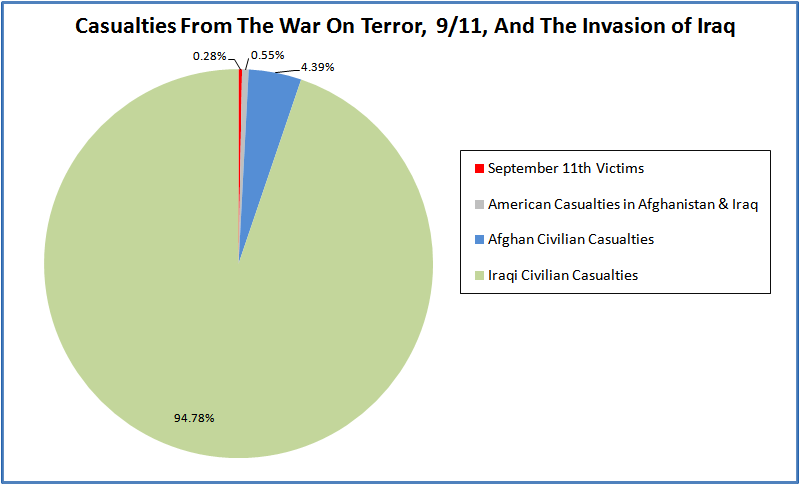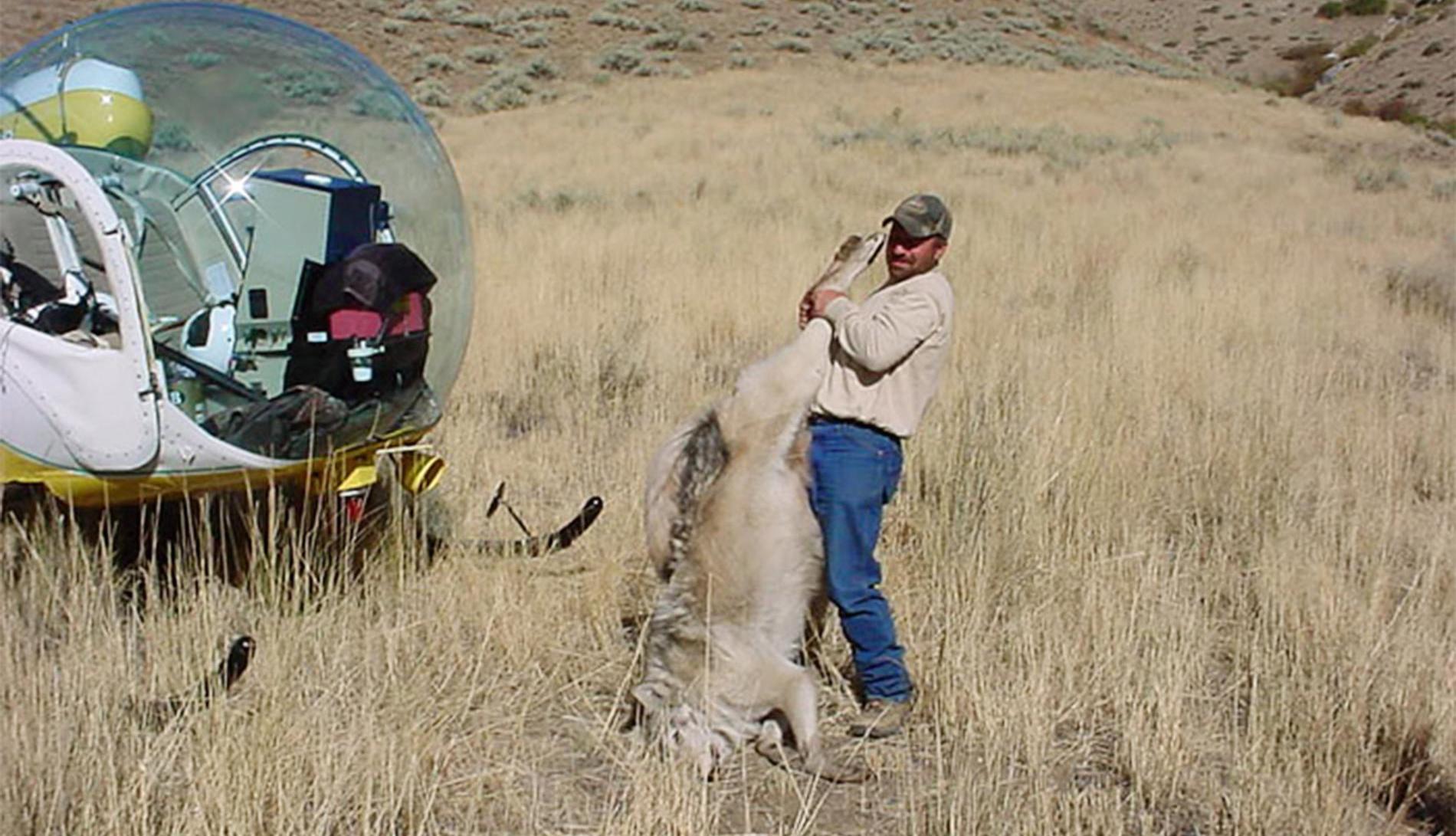
Wildlife Slaughter: Public Tax Dollars At Work
This interview between Derrick Jensen and Christoper Ketcham examines the U.S. government’s taxpayer-funded wildlife slaughter program. Ketcham exposes Wildlife Service’s use of poisoned bait, aerial gunning, neck snares, leghold traps (banned in 80 countries), and cyanide traps to kill millions of wild animals each year in the United States. This conversation originally aired on the show Resistance Radio.
Featured image: Wildlife Services employee or contractor holds a wolf killed by aerial gunning in Idaho. USDA photo.
Derrick Jensen:
My guest today is Christopher Ketcham. He’s a freelance writer for Harper’s, The New Republic, Vice, and many others. Today we discuss Wildlife Services – but before that – he has a new book out, a very good book, called This Land: How Cowboys, Capitalism, and Corruption are Ruining the American West. That book is a product of 10 years of research and travel across the public lands of the west.
Chris, first off, thank you as always for your tremendous work in the world and second thank you for being on the program.
What is ‘Wildlife Services’?
Christoper Ketcham:
I devote two chapters in my book to Wildlife Services because they are such a heinous operation of the federal bureaucracy. Basically, Wildlife Services is a branch of the US Department of Agriculture. Specifically, a branch of the Animal, Plant and Health Inspection Service at the USDA; whose purpose is to slaughter wildlife to protect industry.
Now on western public lands most of that slaughter is conducted to benefit one industry; the livestock industry. What we’re talking about here is a killing machine of: aerial gunships, helicopters, airplanes, cyanide landmines distributed across the landscape, poison collars placed on sheep, and all sorts of traps designed to kill those animals deemed predators and pests by the livestock industry.
What do they mean by predators and pests? Well, the livestock industry generally asks Wildlife Services to kill out wolves by the tens of thousands, when the wolves threaten cows and sheep. Coyotes are slaughtered every year to protect livestock. Black beers, grizzly bears, cougars, and then a host of other animals that you wouldn’t think would make the death list for the livestock industry but do. Animals like beavers and prairie dogs.
You know both of these are keystone species in western ecosystems. Beavers because obviously they dam water, they create meadows, and they are incredibly important in arid land ecosystems for the simple fact of creating water retention in the uplands. Prairie dogs create habitat for many other species. Their burrows are said to allow water to more efficiently percolate into aquifers. Generally, when you see prairie dogs on the landscape in the west, you are looking at healthy grasslands.
The livestock industry wants to kill out beavers because beavers dam up water that stockman want to use to water the cattle and grow hay. Prairie dogs have to be eradicated in massive numbers because the prairie dogs are considered competitors for forage with cows.
And on, and on and on.
During the 20th Century it is estimated that Wildlife Services killed something like tens of millions of animals across the west to benefit this one industry: the livestock industry. It is a campaign of destruction, poisoning, and bloodshed that is paid for by the US taxpayer, to the tune of something like 150 million dollars a year.
04:55
DJ:
To be clear, taxpayers pay 150 million dollars a year to slaughter wildlife?
CK:
Yes. It is very efficiently done. We often castigate the US government for being inefficient. This is a well-run program, a smoothly-oiled machine of mayhem.
DJ:
You’ve talked about wolves and coyotes. I want to come back to that, but something I think about every time I throw out birdseed is that they also kill birds. It’s extraordinary to me that they kill birds who are feeding on the farms where they grow birdseed so I can have a bird-feeder in my back yard.
They kill lots and lots of, say for example, red-wing black birds, or is that a different organization?
CK:
That’s Wildlife Services. The bird kills are often done to protect agriculture. Not to protect livestock but cropland operations of all types. But they also slaughter birds that threaten air traffic. If you have large flocks of starlings or sparrows (whatever it might be), they may get caught in the engines of jets. Well, Wildlife Services will go in and make sure that those birds do not pester air traffic.
DJ:
Before we get back to wolves, coyotes etc., can we talk for a second about 1984 and just the name Wildlife Services? Is this not a beautiful name?
CK:
It is the perfect Orwellian name. Wildlife Services has its origins in the 1890s when it’s predecessor, called the Bureau of Biological Survey, would go around and identify, specifically wolves, that were considered a threat to stockman in the west.
The Bureau of Biological Survey really got its teeth into this business in Colorado, where the stock industry and wolves had gone head to head for many years. The stockman could not successfully eliminate the wolves. They turned to the US government for help to kill these wolves. So from 1905, we see the Bureau of Biological Survey is aiding the US Forest Service so that the forest rangers can go out and kill the wolves.
After 1931 Congress passed the Animal Damage Control Act that basically established the Bureau of Animal Damage Control – a far less Orwellian name right. That name at least sort of says what the agency does – controls animal damage, controls the animals.
In the 90s (I believe) Animal Damage Control got its name changed to Wildlife Services via some inventive bureaucrat who figured, “hey we are going to service the wildlife with a shotgun!”. So that’s the history in brief of the naming of Wildlife Services.
08:48
DJ:
Right now when I look out the window and I see a couple of bears, literally at this moment, and I know bears get killed a lot.
How does it actually work that an animal gets targeted for killing? Is this just routine, or does it usually take a request by the rancher? Are they basically acting as taxpaid servants of individual ranchers, or do they go out and kill the wolves, coyotes etc. prophylactically?
09:32
CK:
What happens is yes you can have an individual rancher who determines, through questionable means, that some of his livestock have been killed say by a pack of wolves ranging locally on the public lands nearby, or even on private lands. So, he calls up Wildlife Services, “I’ve got a problem. You’ve gotta come in an investigate”.
A Wildlife Services trapper will come in and do a quote “investigation”. Now I’ve written in my book about what these investigations amount to. They are in fact usually cursorily, incompetently done, and designed almost always to substantiate the initial claim of the rancher regardless of the evidence.
The rancher can say these cows died by wolves and the trapper will look around and say, “well it doesn’t look like there’s any evidence of a wolf attack, but we’ll call it a wolf attack anyways”. Thereafter, the whole machine starts going into gear and after that you’ve got aerial gunships prowling the area and you’ve got traps laid out.
These are steel leg-hold traps. They are extremely painful. When an animal gets trapped in these things there’s incredible suffering that goes on. Especially given that the trap-shut-times for Wildlife Services are not regulated. You can leave a trap out and just check it every week instead of every day or every other day as required by a certain federal statute.
This rancher who called in Wildlife Services usually gets satisfaction in that Wildlife Services is generally pretty good at tracking down and killing the wolves who supposedly did the crime. Even though, as I mentioned earlier, there’s often not much proof of that (so called) crime.
13:01
On the other hand, you have what’s called prophylactic killing. In which Wildlife Services will go out and just start hammering local populations, say of coyotes. This involves flying around, usually in an airplane, and just gunning down coyotes on sight. They call this prophylactic killing “preventative”. Whereas, killing that occurs after there is evidence, that’s called corrective. So, you’ve got preventative and corrective.
Most of the killing by Wildlife Services is preventative. In that there is no actual evidence of the pack of coyotes in question say having actually attacked anything. They are just killed preemptively. Because they might go after livestock some day in the course of their life.
At this point, you get, you understand, that this absurd. This is crazy. But this is how the system operates.
14:14
DJ:
That reminds of that famous line from a slaughter in France many hundred years ago. A town in France was going to wipe out a certain radical sect of Christians. They couldn’t figure out who was which sect and the person who ran the town commanded his troops, ‘kill them all and let God sort them out’.
It’s the same sort of thing.
CK:
Yup that is exactly the mentality.
DJ:
I want to go back to the wolves, but I want to comment something; when it is shown that the wolf killed a cow or a sheep, the ranchers get paid. Can you talk abut that?
CK:
Right, that is the depredation compensation program for want of a better phrase. Yes, the federal government will reimburse a rancher for the dead cow if it is proven that the cow was preyed upon by say a wolf or a cougar, or whatever predator, might be a grizzly bear or a wolverine. This incentivizes cattlemen to falsify their claims of depredation.
Cows and sheep are open-range animals. They are subject to all sorts of inclement weather conditions, rough terrain, and accidents: a cow falls off a cliff, gets caught in a slot canyon or struck by lightning, or just lost; a baby ewe gets lost and dies. There are many, many ways for livestock to perish on open range. But if you can show they perished from predators then you get paid. This is obviously a recipe for corruption of the system because of that incentivizing.
17:11
DJ:
Don’t they also get paid higher than market value for ones that have been shown to be a predator kill or purportedly shown?
CK:
No, I think they get paid full market value. For example, this could be a calf that was killed, but I think they would get paid for the full market value of the calf as if it were to have grown to full maturity for sale.
DJ:
My point on this is ultimately, this is something I’ve never understood. The only way I can understand this is a hatred of nature. That honestly if I were running cows, I don’t care if I sell it to a slaughterhouse of if I get money [from the government]. It doesn’t matter. It seems like it would be just a fine business. I wouldn’t care if my cows got eaten as long as I got paid. I don’t understand why the ranchers get to cry victimization when they’re getting paid for the dead cow anyway. That’s what I’m getting at. It makes no sense to me. From the rancher’s perspective it’s like, “yea I don’t care if wolves eat all of them. That means I just sold my entire crop of cows”.
18:32
CK:
Yea now look what we are talking about is not a cost-benefit analysis. There is a cultural ground from which these ranchers are reacting to predators. That culture is about domination of the natural world. The livestock industry’s always been about domination and control of nature, and subjugation of the western landscape: so that cattle can be safe in a place where it’s to arid really for this invasive species (Bos Taurus) that evolved in humid Europe. And where there are tons of predators that will kill the cows as they naturally should, because you know, wolves are going to prey on sheep. Always, it’s always been done.
When they see this predator come in and kill their cows and their sheep, it’s an offense to the moral order. To the cultural moral order of their universe. That, to a certain extent, explains the level of hysteria on the part of stockman when confronted with the presence of predators on the western landscapes.
20:08
DJ:
When we talk about ranchers on the western landscape, we are not generally talking about some homesteader running three cows. This is actually big business, right?
CK:
If you look at the number of permittees who take out a permit to run cows on public lands, most of the permittees are either corporations looking for tax breaks, hobbyists like Ted Turner (so rich people who view these cows as playthings), or mining companies that run cattle in order to also secure the water rights that come with cattle permits. So, for the for the most part we’re not talking about hard scrabble range clans, the little guy eking out survival on the public lands. Those people do exist, but for the most part, public lands ranching is corporate business or is the stuff of rich people.
Rich people who do own herds will contract with local cattlemen, local cowboys, to manage the range, the herd and the public land. These guys aren’t the real owners of the property, they’re just servants for the wealthy who actually own the cattle. It’s the ranch hands and ranch managers who’ll be the most pestiferous and most angry when confronted with predators on the public lands, because they grew up with the culture (public lands ranching culture) and in order to keep a job, while they serve the absentee gentry, the aristocracy who owns most of the cattle on public lands.
DJ:
You keep saying public lands and I think a lot of people in the west know this but maybe people in the east don’t, maybe even in the west don’t. We are not talking about a wolf or grizzly bear crawling up onto your porch and taking the sheep that is sitting two feet from your door. We are actually talking about people who are making a living off of grazing their cows or sheep on land that actually belongs to the public and is rented out to these corporations at sub-market values. We are talking about a huge subsidy even if they weren’t given the additional subsidy of killing predators.
23:33
CK:
Yea that’s right. Let’s make this clear, we are talking our land, the common land. Owned by every American citizen. In fact, a co-sovereign on these lands, for determining how they should be used, or not be used. How they should be protected and preserved. A lot of the so-called depredation on livestock does occur on public land in very wild places in the back country, far from people’s homes, far from people’s private land. And yes, Wildlife Services is yet another subsidy extended to the public lands ranching industry.
The total value of that subsidy, with all the inputs accounted for – everything from road maintenance, fence building, water diversions, to sub-market leasing rates for cows, to the operation of Wildlife Services – one estimate has the total subsidy for public lands ranching coming out to something like a billion dollars a year. One billion dollars. And the remarkable thing here is that public lands ranching only accounts for two percent of all the beef produced in this country. So, a billion dollars for two percent of the beef nationally.
At the same time, you have a regime of incredible waste and destruction to protect public lands ranching producing that meager two percent of beef. Wow, again this is just crazy when you think about it. But there it is, it is the fact of American life and it has been so for a long, long time.
25:38
DJ:
I want to mention something that happened I believe a year or two ago that has just horrified me even more than all the wolf killings. A grizzly bear killed some chickens in somebody’s ranchette in Montana and so they shot the grizzly bear. It blew me away because chickens are one of the most common creatures on the planet and grizzly bears are endangered. I used to raise chickens when I lived in Spokane and coyotes would get them once and a while. That’s the cost having chickens run free in coyote territory. It offended me on a whole other level that you would kill an endangered species because it killed a couple of pet chickens of somebody who’s wealthy enough to own a ranchette. To kill an endangered species, especially under those circumstances, seems horrific to me.
CK:
I agree. It’s a reflection of the deranged values of our society. No other way to put it.
DJ:
In Washington state, there has been every year multiple members or entire packs wiped out, and it is all to serve one ranching outfit. I’m sure there are others to serve as well, but every year for the last six or seven years, there’s a guy [Len McIrvin] who absolutely refuses to take any payment for any wolf kills and any time a cow dies, he wants the entire wolfpack wiped out. You’ll see sympathetic articles about him in the newspaper saying it is driving him out of business etc.
But I did a little research and the guy only claims to lose like two or three cows a year and he runs 4,000 cattle. Honestly if you can’t survive two cows out of 4,000 lost then you’re doing something wrong. In this particular case, they’re serving one guy who is wealthy enough to run 4,000 head of cattle.
Take any of that any direction you want to go.
Note: there’s less than 125 wolves total in Washington state according to news media.
CK:
One comment I can make among several that can be made, there is a simple fact that public lands ranchers are constantly promoting themselves to be the paragons of self-reliant business: that they are the hard-scrabble individual who is out on the range. Yet, they are constantly whining and complaining and calling in the federal government to help them out with the slaughter of these evil wolves or the other subsidies that we mentioned earlier.
Meanwhile, the actual rates of depredation are very low compared to the total number of cows going out on the range. For example, a former Wildlife Services tracker named, Carter Niemeyer, told me something like you have millions of beef cattle going out in the northern Rockys Range and something like a quarter of a percent of them are lost to predators. A quarter of a percent.
Again, the hysterical reaction of this Washington rancher [Len McIrvin] can be explained by a cultural background in which these wolves are seen as an offence against the order of things. And conveniently at the same time he can trick unwary journalists into believing that this is not just a threat to the moral order but an economic threat to his very survival. But both are just lies, convenient lies.
It is incredible to me that this tiny minority in the west, public lands ranchers, exercise such outsized influence on how we manage our lands. It’s really incredible. Talk about capture by a tiny minority against the interests of the broad majority.
31:51
DJ:
The people you talk to, in your experience, do the frontline workers at Wildlife Services, are they fueled by ‘it’s just a paycheck’ and the Upton Sinclair ‘it’s hard to make a man understand something when his job depends on him not understanding it.’?
Or do they think they’re doing a great thing, have a claim to virtue, or do they feel bad about killing so much wildlife?
CK:
I think it depends on the trapper. I’ve interviewed a number of ex-trappers and read documents and media coverage of trappers in the past, who had quit the agency in horror at what they had done. There’s as incredible variety of experience out there.
There are some trappers I think who are passionately engaged in killing predators to protect the livestock industry. Which is what they believe, they believe they are protecting the livestock industry. Hence their passion. These are people who grew up in small rural communities where livestock ranching was a way of life.
I interviewed a guy in Wyoming for my book. I just called him ‘Bob’ because he was very much afraid of being outed in his community and being even physically threatened if he spoke out against the ranching industry. He wrote a letter to Brooks Fahy, who is an activist who has for many years worked to expose Wildlife Services.
Bob wrote that he, “quit because of the unethical and brutal methods I was required to do as a trapper. A lot of stock people are the most bloodthirsty, animal-abusing people you could ever find.” Bob also said that he was, “all for defunding Wildlife Services as it is nothing more than a government subsidy for a bunch of murderous ranchers.”
When you hear that, that’s a guy who was a trapper for many, many years.
He goes on, “it’s the sheep men I can’t tolerate. They’re just bloodthirsty rotten. A coyote or wolf to them, just something to be killed. In the county I’m in (that is in Wyoming), the sheep men are brutes, bullies, either you do what they want, you kowtow to them or you quit or get fired. The ranchers think they’re your boss and they are. It’s a dirty deal and it’s been going on for a long time. Most of the guys at Wildlife Services aren’t as bad as they’re made out to be. But they’re pushed into a lot of things they don’t want to do.”
So, there you have it, I think that answers your question.
There are the guys who are themselves as bloodthirsty as the ranchers. There are others who are just getting a paycheck, and they’re like ‘goddam I don’t want to do this, but I need the money’.
DJ:
We have talked about the horrors of the cyanide, landmines and everything else. We are not simply talking about adults, but I have heard about denning. Killing entire dens of pups of various wildlife species.
CK:
Oh yes. The practice, I’m not sure if it’s still ongoing, but the practice for many years was to track down a coyote den where the pups were holed up and smoke them out. Set a fire around the mouth of the den and as the pups come out, they get clubbed or they themselves burn up. They also used a phosphorus compound called a den smoker.
Dick Randel was a Wildlife Services trapper in Wyoming, like the aforementioned Bob who I also interviewed. Dick Randel used this den smoker, “suffocating the pups was the theory” he wrote. “But they’d often scramble for cracks of light at the entrance. You could hear them howling when they hit the flames and burned alive. The pups ran into the chemical fire trying to get out and it would eat through their tissue, hiss and smolder right into their guts. And they were still clawing at the blocked entrance.”
That’s one of the practices, again paid for by the US government. Our government on our land. Guess we should be proud right?
37:27
DJ:
Just last week Wildlife Services was poisoning prairie dogs in Colorado. I’m presuming that where they kill blackbirds, they also use poison? How do we convey to people the utter horror of what is happening at public expense on public lands?
CK:
Think of those coyote pups having their guts burning from phosphorus compounds, and just think of that over and over and over again.
Then do you want to do something about it, call your congressperson and ask, “are you voting to allocate money to Wildlife Services operation year after year?” Because most congresspeople are. Call up the USDA and call up the Animal and Plant Health Inspection Service (APHIS) that runs and oversees directly the Wildlife Services program.
Call up congressman Peter DeFazio of Oregon, who is one of the few representatives in Congress who has stood up to Wildlife Services. He has attempted to pass legislation to defund their programs and to substantially change the congressional mandate that Wildlife Services got with the Animal Damage Control Act 1931 – basically revise it if not repeal it.
I think the thing here is you have stockmen who are very politically engaged. They are constantly complaining to local officials, country officials, the county commissioners, their state elected officials, and their congressionals that, “these goddam predators are a problem”. You have a lot of people in officialdom listening to this very vocal constituency. What you don’t have opposing that vocal minority is the great majority of Americans who are aghast at these very cruel practices.
What you need is civic engagement. I repeat this over and over again in my book. You need a citizenry that is enraged and engaged. Until that happens, Wildlife Services will continue on and on slaughtering and killing with your money and with not much scientific basis for the killings. This is irrational killing.
41:10
DJ:
I have heard that killing coyotes paradoxically leads to coyote population explosions because they reproduce. Is that correct?
CK:
That’s in my book as well. I interviewed a guy, Robert Wilgus, of Washington State University, who looked into that. He found that if you disrupt pack structures of wolves and coyotes, you actually increase the amount of attacks on livestock. That is quite helpful to Wildlife Services right, so they kill more coyotes, that produces more depredation on livestock, meaning you have to come pack and kill more coyotes, which produces more depredation of livestock. It’s a closed circle where they always get more funding and there’s more killing to be done.
42:30
DJ:
It destroys local social structures and often older members of the predator community will keep crazy younger members in check. A great example happened earlier this year. I mentioned earlier that I see bears all the time, well there was a mother bear who showed up with a baby and she was around for a while and then the baby disappeared. Sometimes males will kill babies to bring the female into heat.
That was seeming kind of weird to me. Someone did some research for me and it ends up normally there will be females who have territory and then males have sort of a meta territory. A big male will make sure that other younger males don’t kill the babies. He’ll basically keep the youngsters in check. But if somebody shoots the old male, and then there’s chaos for a while, you’ll end up with younger males killing the babies.
So, the point is that if you had Wildlife Services come in and kill a pack leader or disrupt a pack, I’m just validating what you just said, it’s going to create chaos, which is going to create some more strange behavior that’s harmful to everybody around.
CK:
Well that’s exactly right. That is what Rob Wilgus found out. That the social structure disruption of predators – whether it be coyotes, wolf packs, local mountain lion populations, or as you remarked also black bear populations – leads then to all sorts of behavior that wasn’t occurring previously. For example, the adult mountain lions will indeed prevent younger mountain lions from going after livestock.
If you were going to approach all the slaughter with a scientific method, that doesn’t justify the slaughter, but it would at least make sense from a bureaucratic perspective. But they’re not even approaching it with a scientific method. It is just randomized violence meted out against predators without any ecological or behavioral understanding.
45:45
DJ:
Let’s pretend that you are able to do one thing and but not another. The thing you’re not able to do is eliminate public lands ranching on the west. You don’t get to do that. But you do get to completely defund Wildlife Services. What do you think would happen? What would that lead to?
CK:
I think you would have a lot of vigilantism. A lot of ranchers going out and killing these predators themselves.
The three S’s: shoot, shovel and shut up. I think you’d have widespread illegal distribution of poisons, such as banned thallium sulphate and sodium fluoroacetate (1080). I think you’d have a lot more sodium cyanide spread across the landscape. I think you’d find more carcasses of animals poisoned with those compounds. I don’t think that would accomplish much frankly, just getting rid of Wildlife Services.
You get rid of Wildlife Services then you also have to have an accompanying regime of enforcement for protection of predators. We don’t have that.
DJ:
You want people to call their congressperson and get engaged. If it’s not merely to dump Wildlife Services, are you suggesting this problem won’t be solved until public lands ranching is also eliminated in the west?
CK:
Yea that’s ultimately where we have to go with this. You really have to eliminate public lands ranching if you want to protect predators on a widespread scale in big ecologically-relevant landscapes. It begins with searing into your consciousness that image of the coyote pups’ guts burning with that phosphorus compound and go from there. Use that as your inspiration, because that’s what we’re really talking about when we talk about the livestock industry in the west.
DJ:
Thank you for that. I want to reiterate something you said earlier. Even if you got rid of all public ranching in the west, that’s only two percent of beef production in the US.
CK:
If you’re a meat eater, it’s not going to affect the price of steak. OK, you still get your hamburger.
DJ:
Which probably came from Georgia anyway.
CK:
Right [laughs]. One of the biggest public lands ranching states if Nevada. The little state of Maryland produces like five-ten times as much beef, some incredibly big figure I forget exactly. That much more beef than all the expanses of Nevada.
DJ:
This is as they say, really low-hanging fruit in terms of environmental reward for economic cost.
Is there anything else you want to say about Wildlife Services?
CK:
Just that they need to go. The only way to get them to go is for the public to make them go.
DJ:
Thank you so much for your constant advocacy for wild nature.



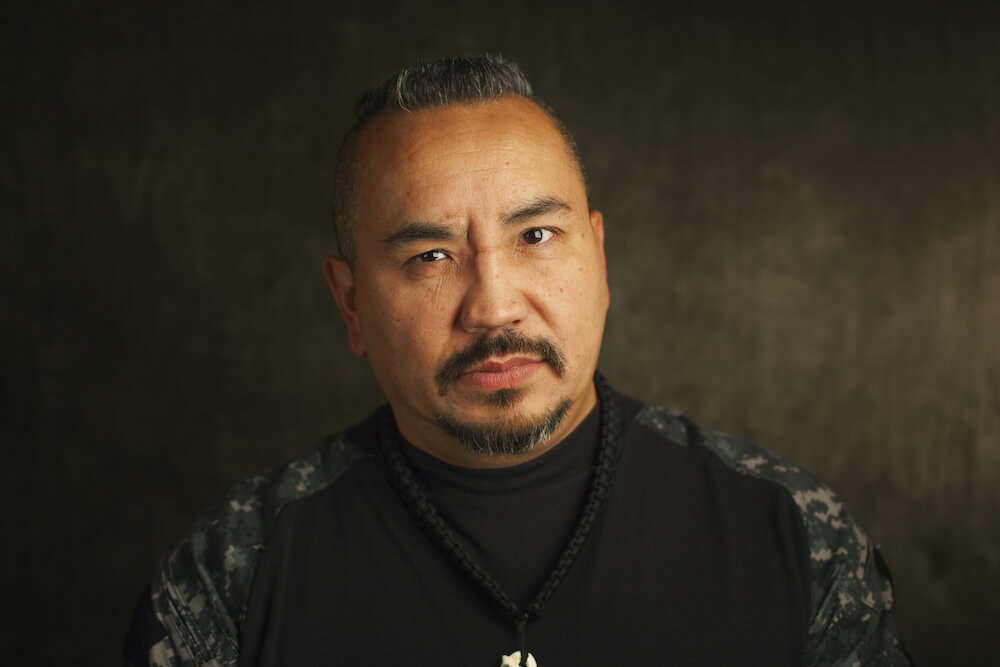 In this episode of The Green Flame podcast, we speak with Sakej Ward.
In this episode of The Green Flame podcast, we speak with Sakej Ward. 